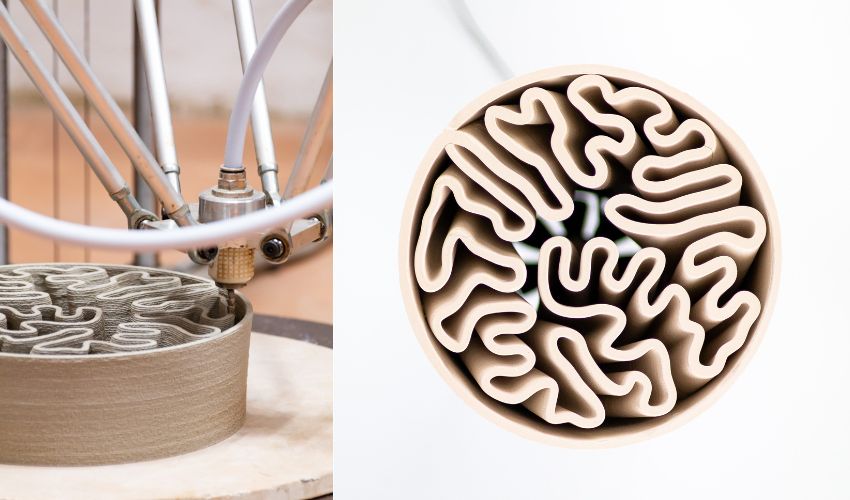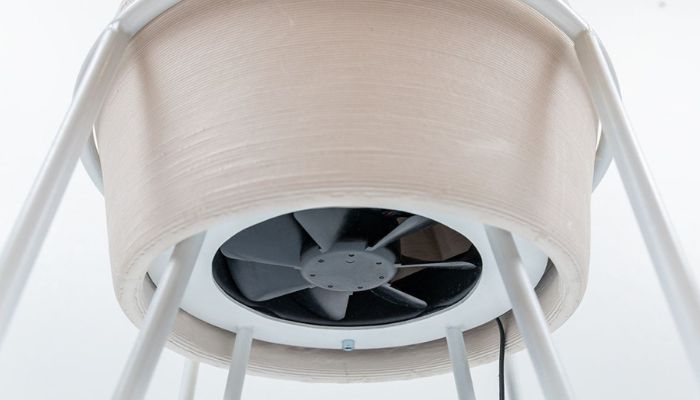A 3D Printed Air Cooler Could Be an Environmentally Friendly Alternative to Air Conditioning

According to scientists worldwide, 2023 has been the hottest summer in history. Understandably, this has drawn ever more people not only indoors but to air-conditioned areas to find relief. However, unfortunately, AC units is not the most environmentally friendly. Not only do they consumer a large amount of electricity, but the fluorocarbons used as refrigerants can also deplete the ozone layer thus contributing further to global warming. Luckily, there may be a solution. A group of designers has used 3D printing to create a terracotta air cooler that is an eco-friendly alternative to traditional AC.
It is no secret that additive manufacturing has been the key to a number of project that are hoping to take humanity towards a greener future. Recycled materials for furniture and footwear, and man-made coral reefs are just a few of the many examples where 3D printing is being used to improve sustainability. This latest project therefore is in good company as it seeks to combine traditional practices with innovative technologies in this 3D printed air cooler.

A fan for the distribution of the air flow
The project is the brain child of the Entreautre design agency and designer Simon Pavey. The idea was simple. They wished to create a porous terracotta container that would be filled with water. The cooling effect occurs in this extraordinary air cooler when the water in the terracotta container evaporates naturally – inspired by ancient practices from the Middle East. The key here lies with the so-called Water Evaporative Evaporator Effect (WEEE), whereby the airflow acts with the moist terracotta surface to create a stream of cool air.
When upgrading the air cooler to modern times, the designers also sought to increase the wet wall surface in contact with ventilated air. They note that ceramic 3D printing in particular was integral for testing complex volumes such as differential growth. This concept is based on biomimicry and explores how a line folds on itself in order to increase surface area. Moreover, the air cooler unit was printed using a custom 3D printer, built by Dutch artist Olivier Van Herpt. It works like a classic FDM printer for plastic, though terracotta is what is extruded as a thin filament, layer by layer. Notably, it seems to share characteristics with concrete 3D printing or archiREEF’s innovative process for creating terracotta tiles.
Furthermore, in order to further optimize the space, they used Grasshopper to create the complex, parametric pieces that cannot be made with traditional CAD programs. It also helped in including the various parameters including everything from lining thickness and porosity to structure resistance, water volume and surface exchange between ceramic airflow and water. Currently, the aesthetically pleasing cooling system is still undergoing testing to ensure accurate performance, durability and efficiency, but one thing is certain – 3D printing technology is opening more and more doors to new more environmentally conscious possibilities. You can find out more on Simon Pavy’s website HERE.
What do you think of this environmentally friendly air cooler as an alternative to conventional air conditioning? Let us know in a comment below or on our LinkedIn, Facebook, and Twitter pages! Don’t forget to sign up for our free weekly Newsletter here, the latest 3D printing news straight to your inbox! You can also find all our videos on our YouTube channel.
*All Photo Credits: Entreautre Design Agency






